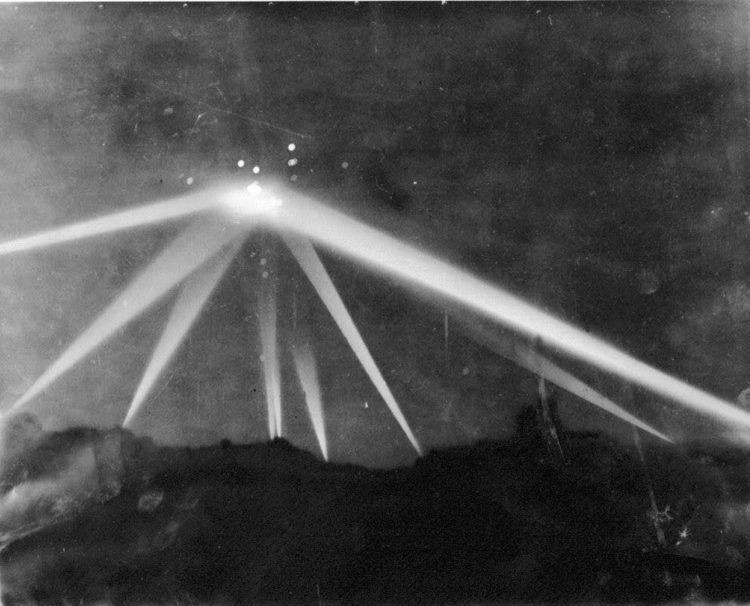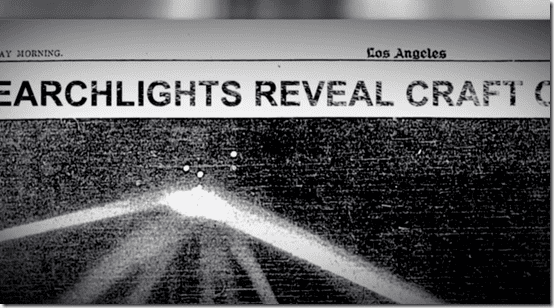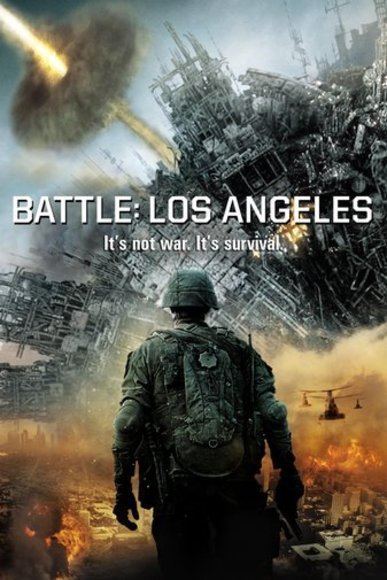Deaths At least 5 | Start date February 25, 1942 | |
 | ||
Location Los Angeles, California, United States | ||
The Battle of Los Angeles, also known as The Great Los Angeles Air Raid, is the name given by contemporary sources to the rumored enemy attack and subsequent anti-aircraft artillery barrage which took place from late 24 February to early 25 February 1942 over Los Angeles, California. The incident occurred less than three months after the United States entered World War II as a result of the Japanese Imperial Navy's attack on Pearl Harbor, and one day after the bombardment of Ellwood on 23 February. Initially, the target of the aerial barrage was thought to be an attacking force from Japan, but speaking at a press conference shortly afterward, Secretary of the Navy Frank Knox called the incident a "false alarm." Newspapers of the time published a number of reports and speculations of a cover-up.
Contents

Some contemporary ufologists and conspiracy theorists have suggested the targets were extraterrestrial spacecraft. When documenting the incident in 1949, The United States Coast Artillery Association identified a meteorological balloon sent up at 1:00 am that "started all the shooting" and concluded that "once the firing started, imagination created all kinds of targets in the sky and everyone joined in". In 1983, the U.S. Office of Air Force History attributed the event to a case of "war nerves" triggered by a lost weather balloon and exacerbated by stray flares and shell bursts from adjoining batteries.

Alarms raised

Air raid sirens sounded throughout Los Angeles County on the night of 24–25 February 1942. A total blackout was ordered and thousands of air raid wardens were summoned to their positions. At 3:16 am the 37th Coast Artillery Brigade began firing .50 caliber machine guns and 12.8-pound anti-aircraft shells into the air at reported aircraft; over 1,400 shells would eventually be fired. Pilots of the 4th Interceptor Command were alerted but their aircraft remained grounded. The artillery fire continued sporadically until 4:14 am. The "all clear" was sounded and the blackout order lifted at 7:21 am.

Several buildings and vehicles were damaged by shell fragments, and five civilians died as an indirect result of the anti-aircraft fire: three killed in car accidents in the ensuing chaos and two of heart attacks attributed to the stress of the hour-long action. The incident was front-page news along the U.S. Pacific coast, and earned some mass media coverage throughout the nation.
Press response
Within hours of the end of the air raid, Secretary of the Navy Frank Knox held a press conference, saying the entire incident was a false alarm due to anxiety and "war nerves." Knox's comments were followed by statements from the Army the next day that reflected General George C. Marshall's belief that the incident might have been caused by commercial airplanes used as a psychological warfare campaign to generate panic.
Some contemporary press outlets suspected a cover-up. An editorial in the Long Beach Independent wrote, "There is a mysterious reticence about the whole affair and it appears that some form of censorship is trying to halt discussion on the matter." Speculation was rampant as to invading airplanes and their bases. Theories included a secret base in northern Mexico as well as Japanese submarines stationed offshore with the capability of carrying planes. Others speculated that the incident was either staged or exaggerated to give coastal defense industries an excuse to move further inland.
Representative Leland Ford of Santa Monica called for a Congressional investigation, saying, "...none of the explanations so far offered removed the episode from the category of 'complete mystification' ... this was either a practice raid, or a raid to throw a scare into 2,000,000 people, or a mistaken identity raid, or a raid to lay a political foundation to take away Southern California's war industries."
Attribution
In 1983, the Office of Air Force History concluded that an analysis of the evidence points to meteorological balloons as the cause of the initial alarm:
Extraterrestrial hypothesis
A photo published in the Los Angeles Times on February 26, 1942, has been cited by some ufologists and conspiracy theorists as evidence of an extraterrestrial visitation. They assert that the photo clearly shows searchlights focused on an alien spaceship; however, the photo was heavily modified by photo retouching prior to publication, a routine practice in graphic arts of the time intended to improve contrast in black and white photos. Los Angeles Times writer Larry Harnisch noted that the retouched photo along with faked newspaper headlines were presented as true historical material in trailers for the film Battle: Los Angeles. Harnisch commented, "if the publicity campaign wanted to establish UFO research as nothing but lies and fakery, it couldn't have done a better job."
Commemoration
Every February, the Fort MacArthur Museum, located at the entrance to Los Angeles Harbor, hosts an entertainment event called "The Great LA Air Raid of 1942."
